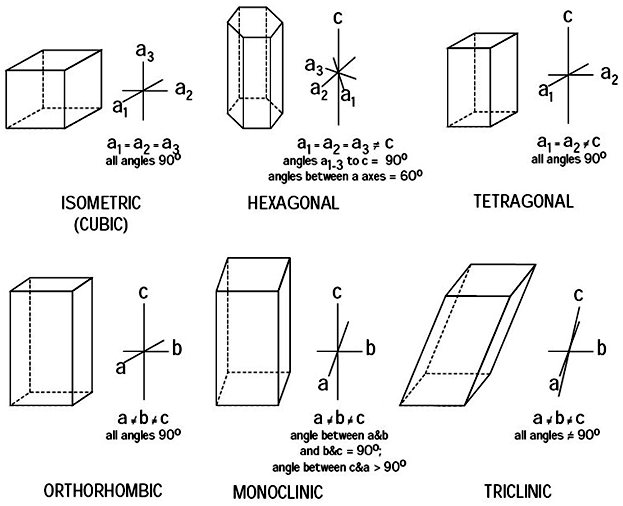The Rock Identification- A Dichotomous Key- Interactive PDF (web version: Rock Key)
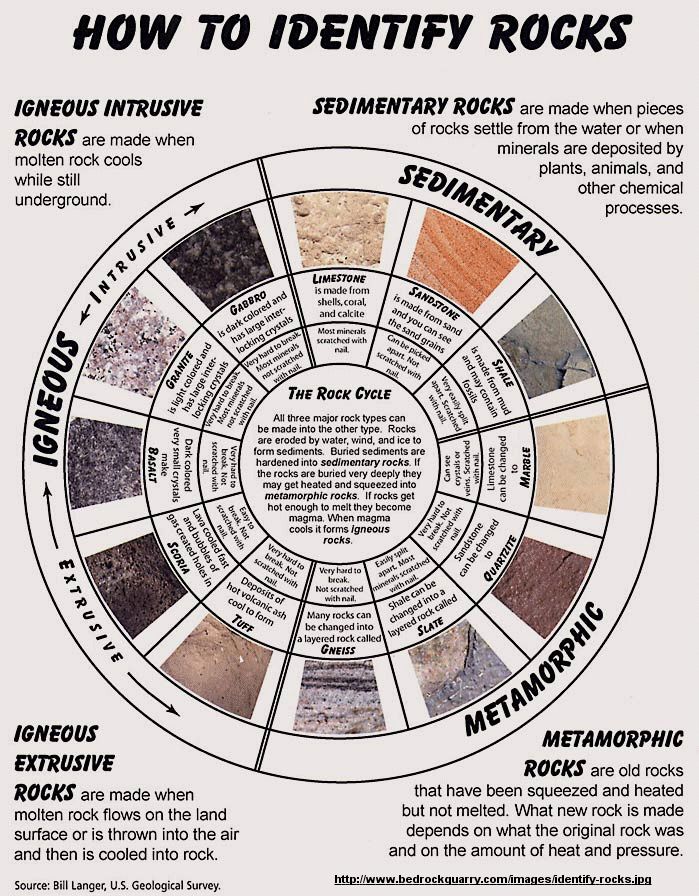
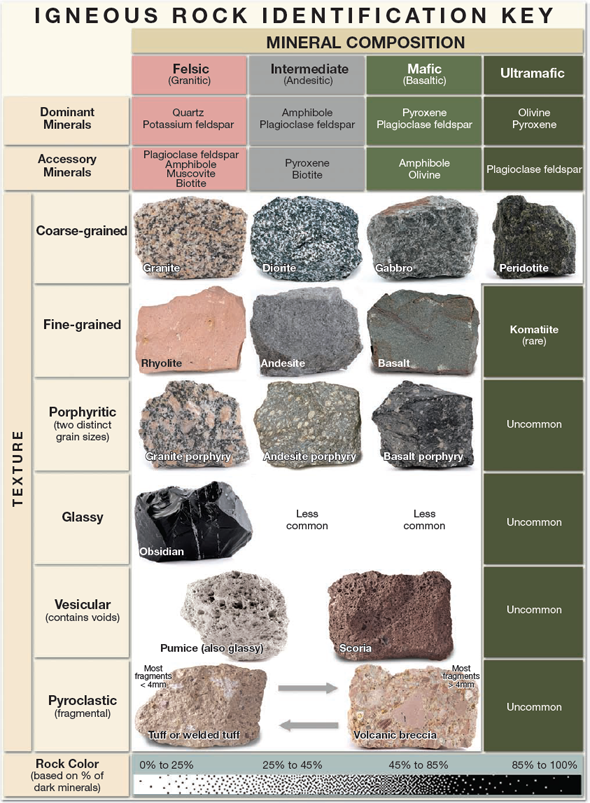
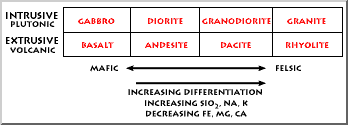
The rock cycle diagram
USGS Mineral Resources On-Line Spatial Data Map (select Geology/geologic map, and any other desired data– sample below)
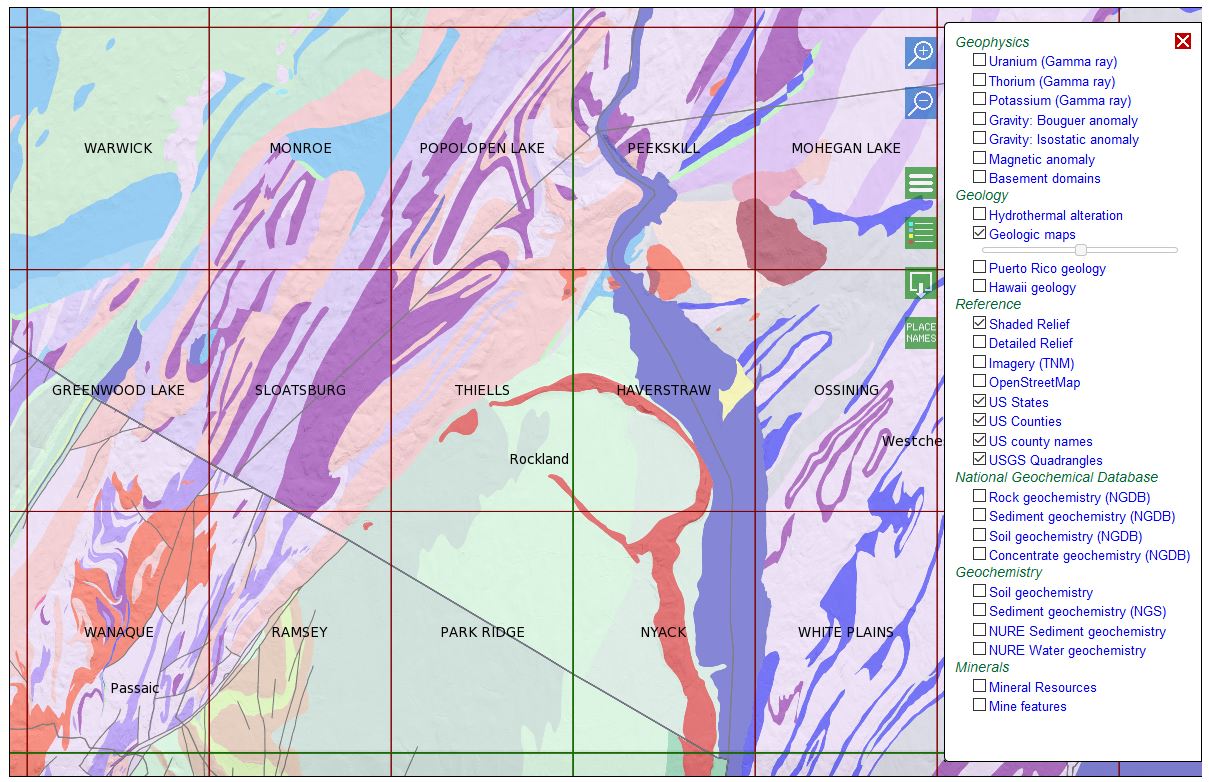
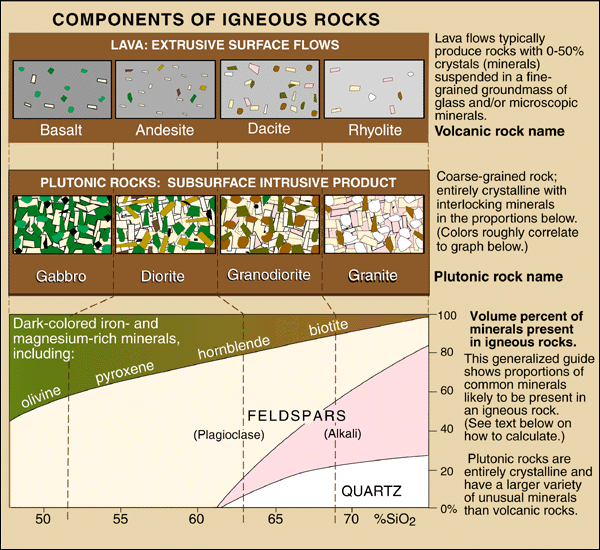
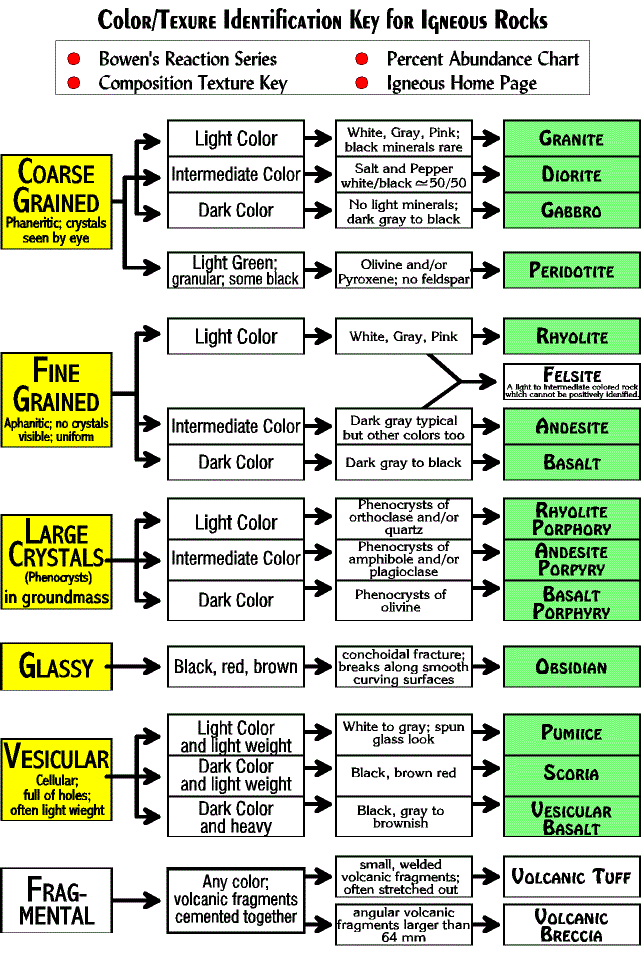
Mineral and Rock Identification Made Easy
North East rock types/examples: http://www.pitt.edu/~cejones/GeoImages/index.html
Splitting
Some rocks split better than others. The quality of splitting is based on the grain or crystalline structure and cleavage planes that should be followed/mimicked when drilling- cleavages are perfect, imperfect, distinct, good, fair, and poor. The difficulty of splitting is formally described as easy, hard, and difficult to produce.
According to Trow and Holden:
Wedges & Shims can generally split stone up to 4-6 times the length of the wedge
Guide to Splitting Stone
Cleavage and Foliation
Fabric in rocks is exhibited by visual or physical differences. Fabric Elements are the layers or compositional differences that compose or define the fabric.
Primary Fabrics: bedding in sedimentary rocks, flow banding in igneous rocks…
Secondary Fabrics: usually due to strain, especially folding and metamorphosis
more on fabrics here
Foliated (planar fabrics) rocks show layers or sheets, lines or stripes, that may be straight to wavy. The lines are caused by the metamorphosis of the protolith (parent) under pressure, to become metamorphic rocks. The extent of layering is a function of the mineral composition and the pressure they experience, some minerals can also transform into new minerals under pressure.
Cleavage is secondary foliation in fine-grained rocks, post-metamorphosis. Schistosity (S-tectonites): secondary foliation in coarse-grained rocks
Cleavage types:
- continuous
- slaty
- spaced
- disjunctive
- transposition
- crenulation
Rift, Grain, and Hardway Orthogonality in Granite
- Orthogonality: perpendicularity
- Rift plane: formed due to parallel cracks in quartz which can extend into neighboring minerals
- Grain plane: usually parallel to foliation, maybe due to feldspar and mica
- Hardway plane: usually perpendicular to the other two, dominated by tectonic fracturing
Splitting a rock is a hard way in itself. The best practice is to look how the rock broke or possibly eroded and try to mimic the planes or grains and lines you see for the split…then cross your fingers, bite your lip the right way, and go for the split, then learn from the success and failure and prepare to be surprised by what nature made and possibly how it threw a curve ball to your splitting hypotheses.
Mineral Cleavage
Mineral cleavage isn’t necessarily rock cleavage, but is useful if you know what type of minerals primarily compose the rock. Quite often rocks carry these shapes and break in these shapes, but I can’t say they are truly predictors of what is to come via feather and wedge splitting. Mineral cleavage is atomic breaks, rock cleavage is mineral breaks. Most rock minerals are anisotropic (different properties in different directions- i.e. rift, grain, and hardway).
| Planes | Type |
| 1 | Basal or pinacoidal |
| 2 | Prismatic |
| 3 at 90 degrees | Cubic |
| 3 not @ 90 degrees | Rhombohedral |
| 4 | Octahedral |
| 6 | Dodecahedral |

